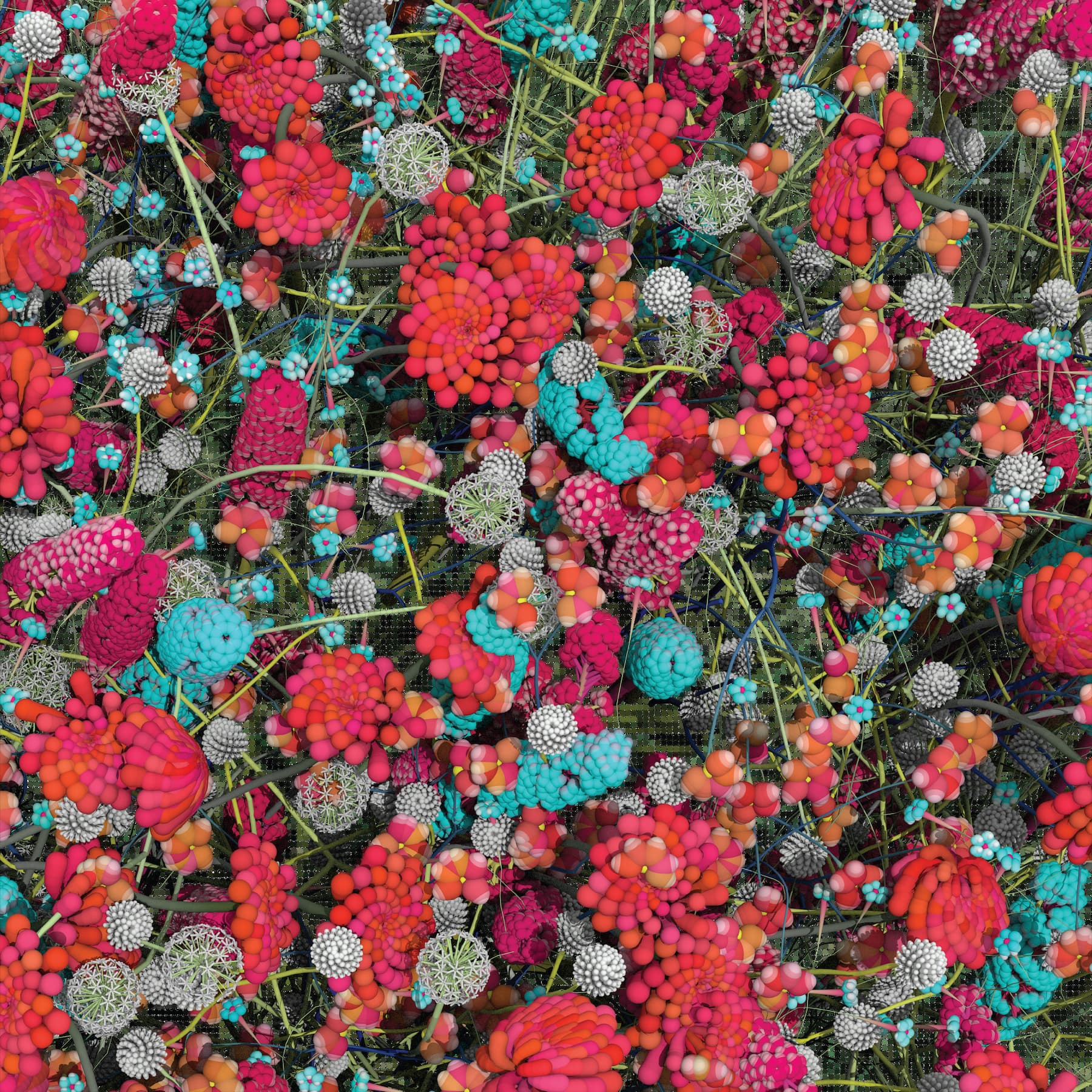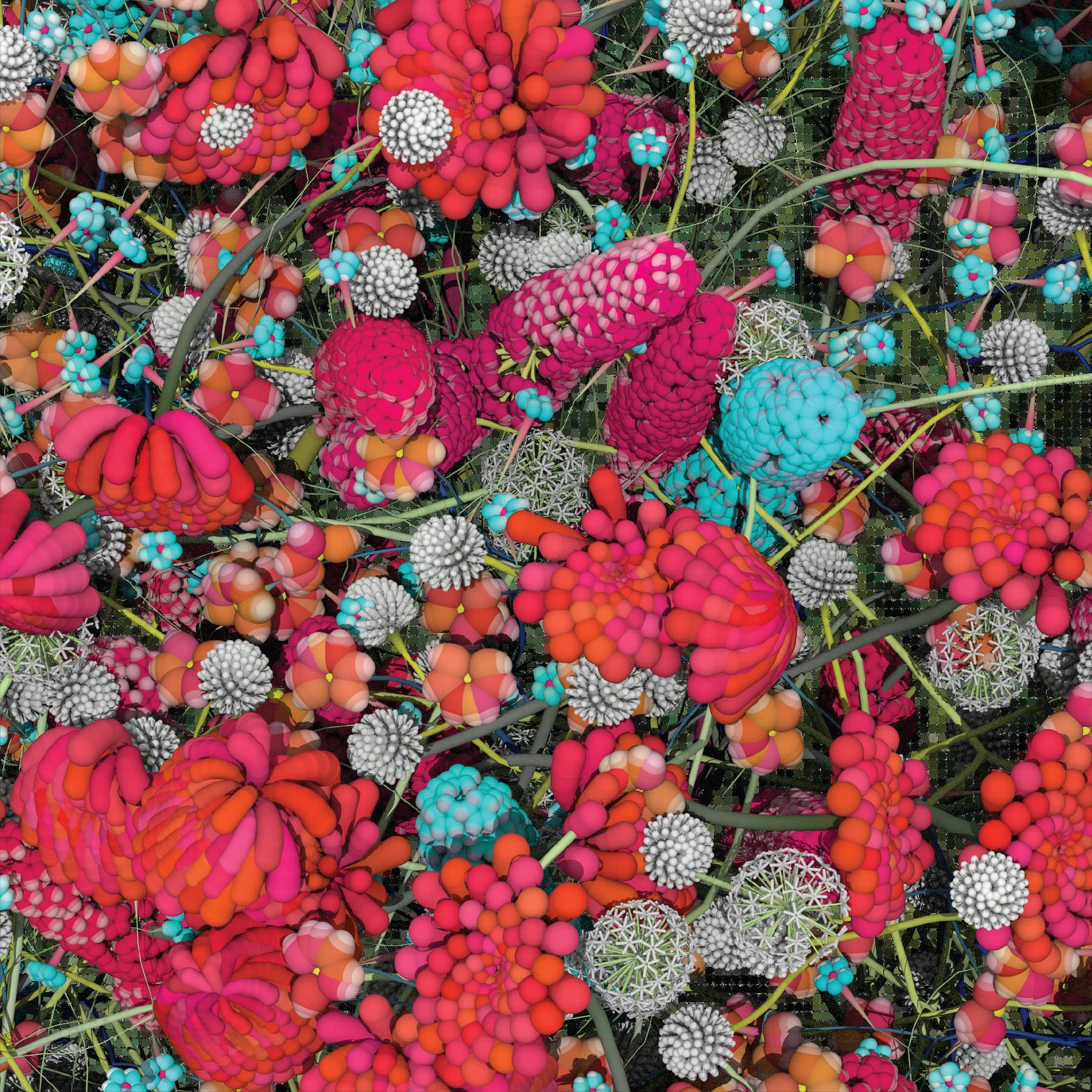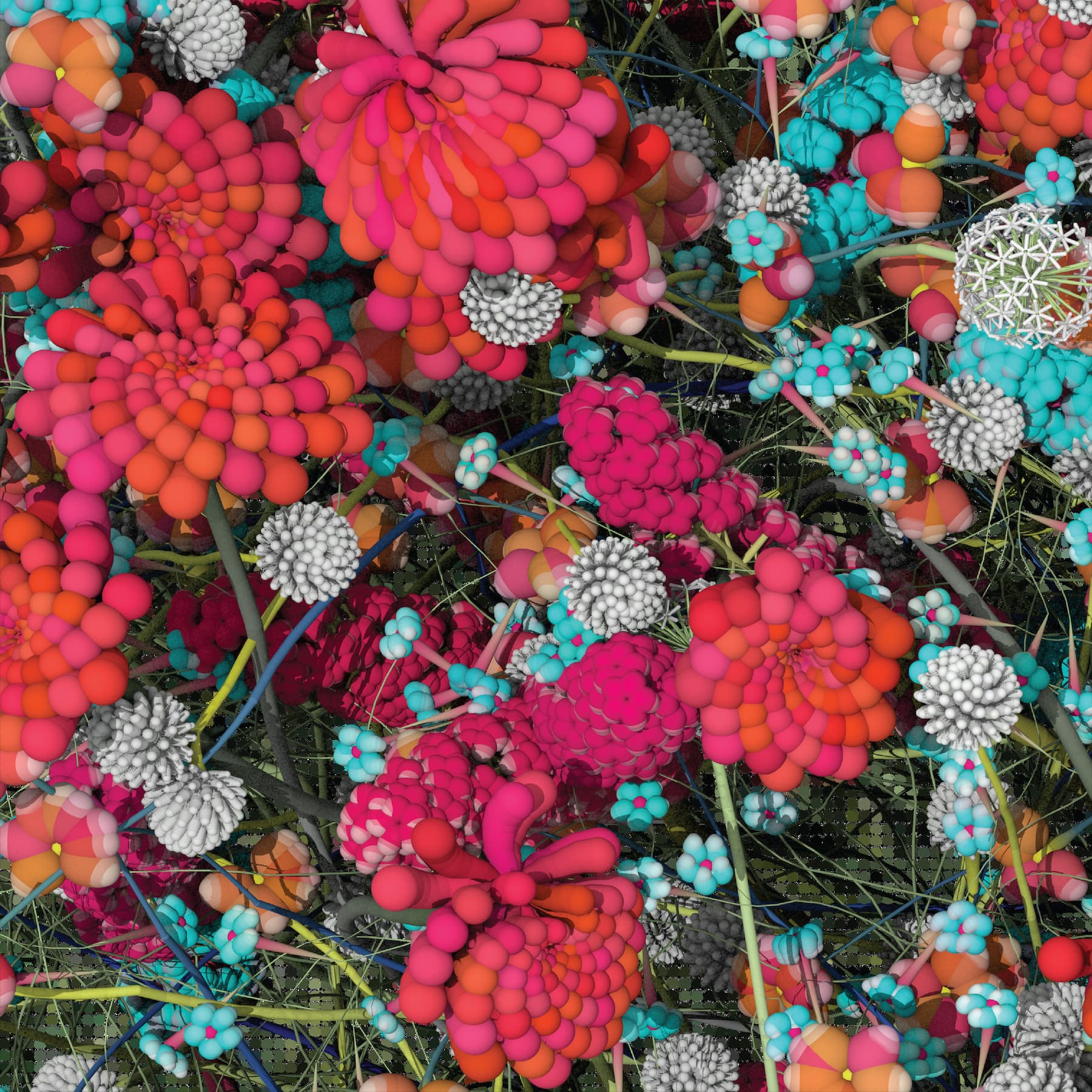Architect and designer Elena Manferdini believes people are drawn to nature not by its pure beauty or arcadian symbolism but because it is a system made of recognizable patterns. In 1975, mathematician Benoit Mandelbrot coined the term “fractal” to describe the seemingly rough and irregular patterns found throughout nature, from the geographic features of coastlines and rivers to the minutiae of plant cells. Around the same time Mandelbrot was proposing theories of pattern in nature and geometry, art historian Ernst Gombrich was investigating patterns in decorative arts. He argued that symmetry and order in design stem from a biological impulse to find predictable rhythms in complex environments.1 Recent science has supported that the human brain is uniquely drawn to these types of patterns, and over the last fifteen years researchers have found correlations between fractals, especially those found in nature, and stress reduction in study participants.2



This attraction to pattern becomes uncanny in Manferdini’s hyperdigital reinterpretations of natural systems. From a distance, the multimedia installation Wall Flowers: Clover appears to be a lush expanse of floral wallpaper, as our brains fill in the expected pattern. Close looking destabilizes this impression, revealing globular and wildly colored blooms that intersect and intertwine in impossible ways (cat. 73 details). To generate the imagery, Manferdini designed a 3-D-modeled animation of a virtual meadow, swaying gently in a computerized breeze (fig. 1). Stills, each captured at different moments, scales, and densities, are reproduced on the wallpaper and three mirrored panels. The mirrors simultaneously reflect and obscure the viewer as they move through the digital flora. In the subtle variations of time and dimension, the repetitions and cycles of the program become apparent, creating a complex and dense environment that is both appealing and incongruous, wild and synthetic. Viewers are encouraged to photograph their unique encounters with the work, a postcard from an otherworldly landscape.
Kit Bernal
-
E. H. Gombrich, The Sense of Order: A Study in the Psychology of Decorative Arts (Ithaca, NY: Cornell University Press, 1979). ↩︎
-
For information on natural fractal patterns and stress reduction, see Caroline M. Hägerhäll et al., “Human Physiological Benefits of Viewing Nature: EEG Responses to Exact and Statistical Fractal Patterns,” Nonlinear Dynamics, Psychology & Life Sciences 19, no. 1 (2015): 1–12. For fractal patterns’ psychological effects more generally, see Kelly E. Robles et al. “Aesthetics and Psychological Effects of Fractal Based Design,” Frontiers in Psychology 12 (August 2021): https://doi.org/10.3389/fpsyg.2021.699962; Caroline M. Hägerhäll et al. “Investigations of Human EEG Response to Viewing Fractal Patterns,” Perception 37, no. 10 (February 2008): 1488–94. ↩︎